Hostas are popular shade-loving perennials prized for their lush foliage, but they shine even more when paired with the right companion plants. Learn about the best hosta companion plants to help this lovely perennial thrive. Get a list of the best companion plants you can surround your hosta with, including the best perennials to grow as companion plants for hosta, the best annuals to plant around hosta, the best herbs, and the best shrubs to plant with hosta.
Get ideas about which plants to avoid planting near hosta plants as well. You will also learn about the best time to plant hosta, the best place to plant hosta, the best fertilizer for hosta, the watering needs of hosta, and the best way to propagate hosta to increase the number of your plants. Get ideas about how to keep deer from eating your lovely hosta plants. You will also find a handy quick reference chart that lists all of the hosta companion plants in one place. Let‘s get started!
Table of Contents
Why Hostas are Favorites
I’ve been surrounded by hosta plants for decades, as it grows well in the shady areas where I live in Pacific Northwest garden USDA Plant Hardiness Zone 8. The variegated foliage is striking, and there are many varieties to choose from. The plants return reliably each spring, and are a lovely part of our shady perennial garden area. We have learned that keeping them in our backyard in amongst other plants is the best way for the deer to leave them alone. If you are interested in growing this easy-care, beautiful, shade-loving plant, read on.
Hosta Companion Plants: Flowers
Perennials
The perennials listed below not only thrive in the same shade conditions as hostas but also add variety in texture, height, and color to your garden.
Astilbe: Known for its feathery, colorful plumes, astilbe adds texture and color to shade gardens.
Ferns: Many fern varieties, like the Japanese painted fern, pair well with hostas in shady spots.
Heuchera (Coral Bells): Heuchera offers colorful foliage, complementing hosta’s broad leaves.
Brunnera (Siberian Bugloss): Features heart-shaped leaves and delicate blue flowers.
Pulmonaria (Lungwort): Attractive, speckled foliage with early spring flowers in shades of pink or blue.
Bleeding Heart (Dicentra): Delicate, heart-shaped flowers add elegance and softness to shade gardens.
Toad Lily (Tricyrtis): Exotic-looking, orchid-like flowers bloom late in the season, adding interest.
Solomon’s Seal (Polygonatum): Graceful arching stems with white or pink bell-shaped flowers.
Japanese Forest Grass (Hakonechloa): A beautiful grass that adds texture and contrast with its cascading blades.
Ligularia: Tall spikes of yellow flowers and large leaves bring height and bold color to shady areas.
Columbine: These tall perennials offer a height contrast to hosta and thrive in shady areas.
Lupine: Another favorite, these spike-shaped plants are in my backyard along with the columbine to add to the purple and pink color palette in the garden area.
Annuals
These shade-loving annuals bring additional color and texture to your hosta garden throughout the growing season.
Impatiens: Bright, colorful blooms that thrive in the shade, adding a pop of color near hostas.
Begonias: Both wax and tuberous begonias offer continuous blooms and pair well with hosta foliage.
Coleus: Known for its vibrant, colorful foliage, coleus provides contrast to hostas’ green leaves.
Fuchsia: These stunning flowers hang beautifully, making them a great companion for hostas in shady gardens.
Caladium: With their large, colorful leaves, caladiums offer bold texture and color variety.
Torenia (Wishbone Flower): Shade-loving annual with tubular, orchid-like flowers in vibrant shades.
Browallia: Produces star-shaped blue or purple flowers that brighten up shaded areas.
Lobelia: Compact plants with dainty blue or white flowers, perfect for filling in spaces among hostas.
Sweet Alyssum: Small, fragrant clusters of flowers that create a soft carpet under taller plants like hostas.
Oxalis (Shamrock): With clover-like leaves and delicate blooms, oxalis adds an interesting contrast to hosta beds.
Hosta Companion Plants: Herbs
These herbs listed below not only thrive in shaded areas but also provide fragrance, texture, and even culinary benefits alongside your hostas. Here are 10 shade-tolerant herbs that make great companions for hostas:
Lemon Balm (Melissa officinalis): Thrives in partial shade with fragrant, lemon-scented leaves.
Mint (Mentha spp.): Grows well in the shade and spreads easily, making it a low-maintenance companion. Important: You may prefer to keep mint in a container so it doesn’t spread too much.
Cilantro (Coriandrum sativum): Prefers cooler, shadier spots, ideal for growing alongside hostas.
Parsley (Petroselinum crispum): Grows in partial shade and offers bright green, feathery foliage.
Chervil (Anthriscus cerefolium): A delicate herb that enjoys shade and adds a mild anise flavor to dishes.
Sweet Woodruff (Galium odoratum): Known for its sweet fragrance, it prefers partial to full shade.
Thyme (Thymus spp.): Some varieties, like creeping thyme, can tolerate partial shade and provide a fragrant ground cover.
Wild Ginger (Asarum canadense): Not an edible herb but often grown in herb gardens for its aromatic properties and shade tolerance.
Sorrel (Rumex acetosa): Loves cooler, shady environments and produces tangy, lemon-flavored leaves.
Violets (Viola odorata): Another shade-tolerant herb often used for its leaves and flowers in culinary applications.
Hosta Companion Plants: Shrubs
Hostas pair well with various shrubs that complement their lush foliage and thrive in similar growing conditions. Here are some excellent companion shrubs for hostas:
Hydrangea: With large, colorful blooms, hydrangeas add height and contrast with hosta foliage. They also enjoy partial shade and moist soil, much like hostas.
Azalea and Rhododendron: These acid-loving shrubs bloom in spring, adding vibrant color that pairs well with hosta leaves. They prefer dappled shade, similar to hostas.
Boxwood: The dense, green foliage of boxwoods contrasts well with hostas and provides structure. Their evergreen nature adds interest in the winter when hostas go dormant.
Japanese Maple: Though technically a small tree, Japanese maples have beautiful, delicate leaves that create a striking backdrop for hostas, especially in shaded areas.
Fothergilla: This deciduous shrub has white, bottlebrush-like flowers in spring and vibrant fall color, which pairs well with hostas in shade gardens.
Sweetspire (Itea): This shrub has fragrant white flowers in spring and stunning red foliage in fall. It loves moist soil and partial shade, making it a great hosta companion.
Witch Hazel: A good option for winter interest, with bright yellow or red blooms appearing in late winter or early spring. It pairs well with the hosta’s shade-loving preference.
What Not to Plant with Hosta
Plants that require full sun or dry soil are generally not good companions for hostas, as these shade-loving plants prefer moist, rich soil and low to moderate light. Succulents, like sedum and hens-and-chicks, struggle in the shaded, damp environments hostas favor. Drought-tolerant herbs, such as rosemary and lavender, also don’t thrive alongside hostas since they prefer much drier soil. Aggressive plants like bamboo can quickly overwhelm hostas, competing for space and nutrients. Additionally, deep-rooted trees or shrubs, like certain oaks or maples, may compete too heavily for water and shade out hostas.
Hosta Companion Plant Chart
| Best Hosta Companion Plants | |
| Hosta Companion Plants: Flowers | Hosta Companion Plants: Herbs |
| Perennials | Chervil |
| Astilbe | Cilantro |
| Bleeding Heart | Lemon Balm |
| Brunnera | Mint (in a container) |
| Columbine | Parsley |
| Ferns | Sorrel |
| Heuchera | Sweet Woodruff |
| Japanese Forest Grass | Thyme |
| Ligularia | Violets |
| Lupine | Wild Ginger |
| Pulmonaria | |
| Solomon’s Seal | Hosta Companion Plants: Shrubs |
| Toad Lily | Azalea |
| Boxwood | |
| Annuals | Fothergilla |
| Begonias | Hydrangea |
| Browallia | Rhododendron |
| Caladium | Sweetspire |
| Coleus | Witch Hazel |
| Fuchsia | |
| Impatiens | Worst Hosta Companion Plants |
| Lobelia | Bamboo |
| Oxalis | Hens-and-Chicks |
| Sweet Alyssum | Lavender |
| Torenia | Maples |
| Oaks | |
| Rosemary | |
Hosta Growing Tips
When is the best time to plant hosta?
The best time to plant hostas is in early spring or early fall. In spring, plant them once the ground has warmed but before the summer heat. In fall, plant them at least six weeks before the first frost to help roots establish before winter. Both times allow hostas to settle into the soil with mild weather and adequate moisture. Here is what hosta sprouts look like in the spring.
Where is the best location to plant hosta?
Hostas thrive in locations with partial to full shade, protected from harsh afternoon sun. They prefer rich, well-draining soil that stays consistently moist. Ideal spots are under trees or along shaded borders where they receive dappled sunlight or morning sun.
How much water do hosta plants need?
Hostas need consistent moisture, ideally 1-1.5 inches of water per week. Water deeply at the base to encourage root growth, especially in dry periods. Morning watering is best to prevent leaf diseases, as it allows foliage to dry during the day.
What is the best fertilizer for hosta?
A balanced, slow-release fertilizer (such as a 10-10-10 or 12-12-12 N-P-K ratio) works well for hostas. Apply in early spring as they begin to grow, and reapply mid-season if needed. Avoid high-nitrogen fertilizers, as they can promote leaf growth over root strength. Organic options like compost or well-aged manure are also beneficial for gradual nutrient release.
What is the best way to propagate hosta?
The easiest way to propagate hostas is by division in early spring or fall. Dig up the plant, gently separate the root clumps with a clean knife or spade, ensuring each section has roots and leaves. Replant the divisions immediately, watering them well to help establish roots.
How do you know when to divide hosta?
Signs a hosta needs dividing include overcrowded clumps, reduced leaf size, or a bare center (often called “donuting”). If growth and blooms slow, it’s likely time to divide the plant for renewed vigor.
What are some ways to keep deer away from hosta?
Now that our backyard is established, our hosta are surrounded by good companion plants (some of them are deer-resistant) and the deer do not venture into the shady perennial area. You may need to take more aggressive measures, so here are some ideas. You could use deterrents like deer repellents (Liquid Fence is a good one), fencing, or plants with strong scents (e.g., lavender) nearby. Motion-activated sprinklers and covering young plants with netting can also help protect them. Reapply repellents regularly, especially after rain.
Need More Planting Ideas?
Check out the tips for the best companion plants for eggplant to learn what to grow with those beauties. If you like the idea of companion planting, you might be interested in reading about the best companion plants for pumpkins, sunflowers, irises, garlic, asparagus, rosemary, radishes, beetroot (beets), thyme, parsley, lupine, borage, stevia, kale, lemon balm, dahlias, oregano, or the best companion plants for lavender. Get tips for growing stunning dahlias or vintage roses. Are you a beginning gardener? Try planting some foolproof, easy-care perennials, or learning about the best companion plants for columbine. There are so many exciting plants to grow!
Keep Track of Your Garden with a Journal Logbook
Now that you have learned about some compatible companion plants, keep track of your planting ideas, goals, and plans with a printable, editable free garden journal logbook. Choose the pages you want to use and customize them as you wish to record monthly, weekly, and daily garden tasks, lists, weather, and planting arrangements. There are also grid pages for easily designing the layout of your vegetable garden, flower garden, or landscape. Print it out and put it into a notebook you can take with you to the garden (that’s what I do). It’s nice to have all of your garden information in one place.
Get the garden journal logbook!
Free Online Garden Planner Layout Template
Now that you know which are the best companion plants for hosta, you might need a way to plan your garden layout. Whether you are planting vegetables, flowers, or herbs near your lupine plants, this online garden planner can help you visualize your design and bring it to life. Arrange and rearrange the plants over and over, then print the layout when you are satisfied. With garden tasks that need your attention, this is one way to save time.
It’s fully customizable when you make your own copy and includes two editable chart pages for noting planting specifications.
Get my free online garden layout planner template!
Have a wonderful week, and may all of your hosta-growing endeavors meet with success!

Lisa Mitchell is a wife, mom, and school librarian who likes to grow fruit, herbs, vegetables, and flowers on her family’s small Pacific Northwest farm. To learn more about what this website has to offer gardeners, click on over to the Garden page.

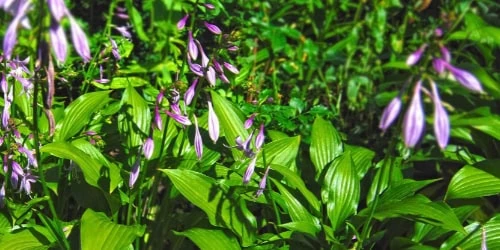
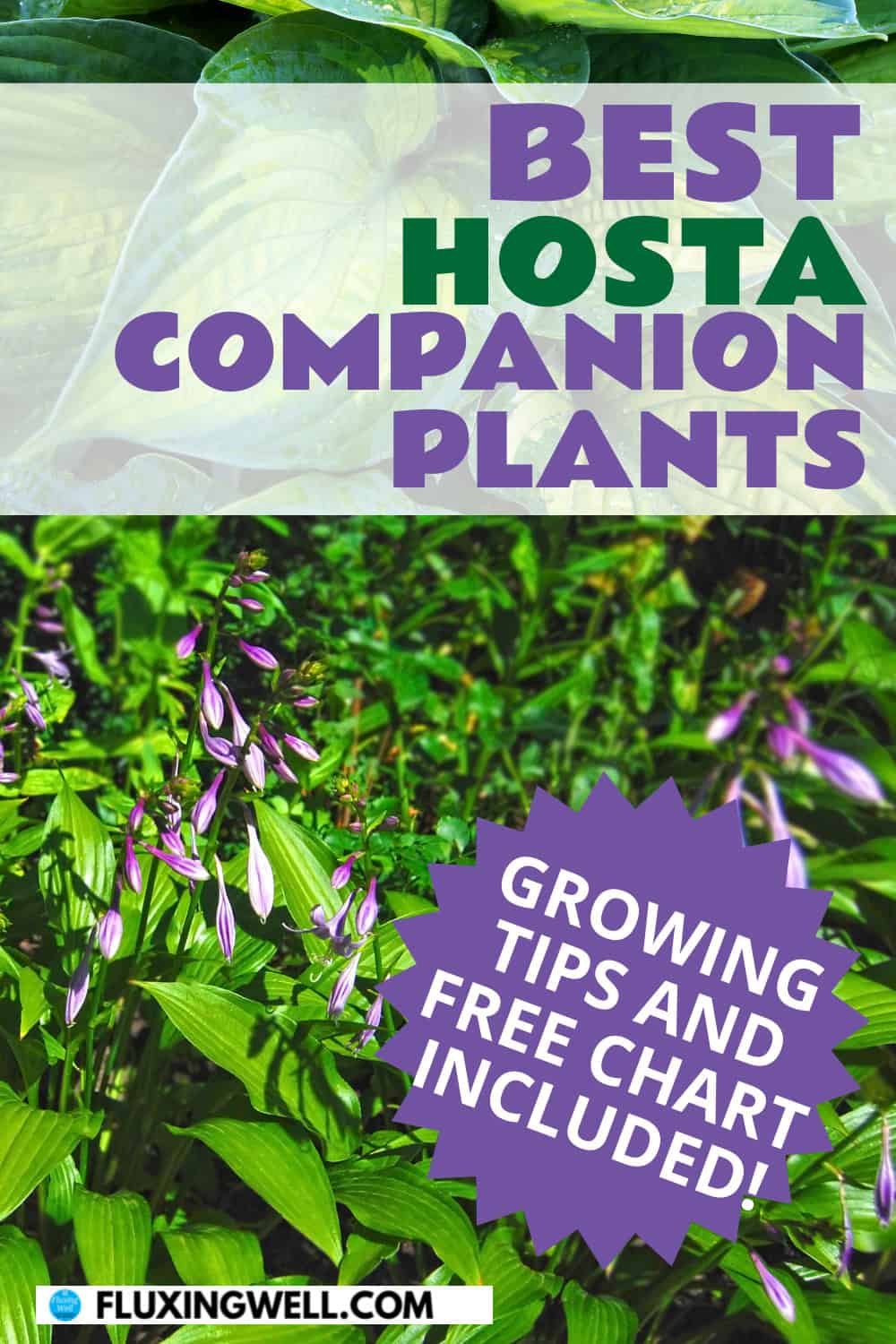
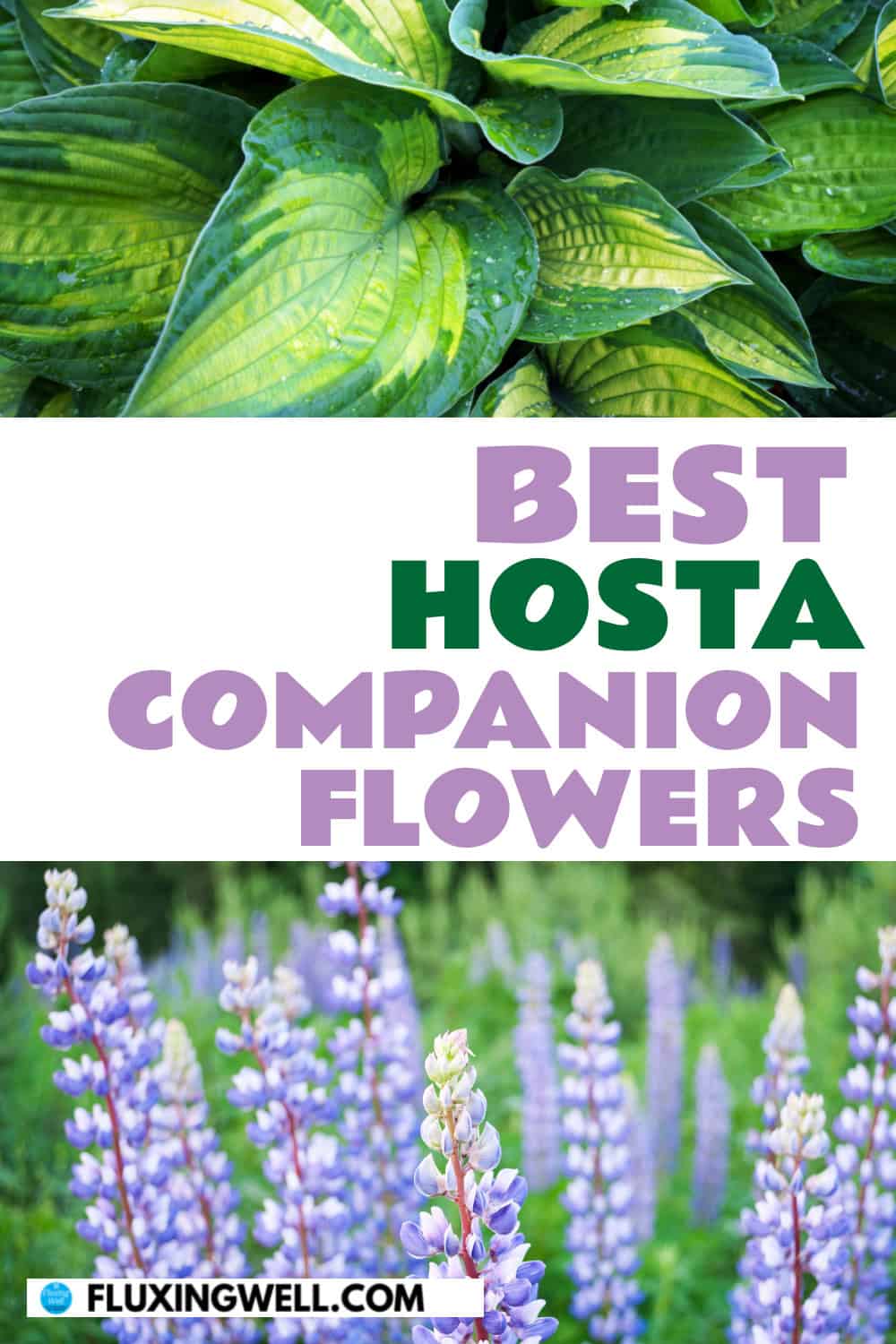
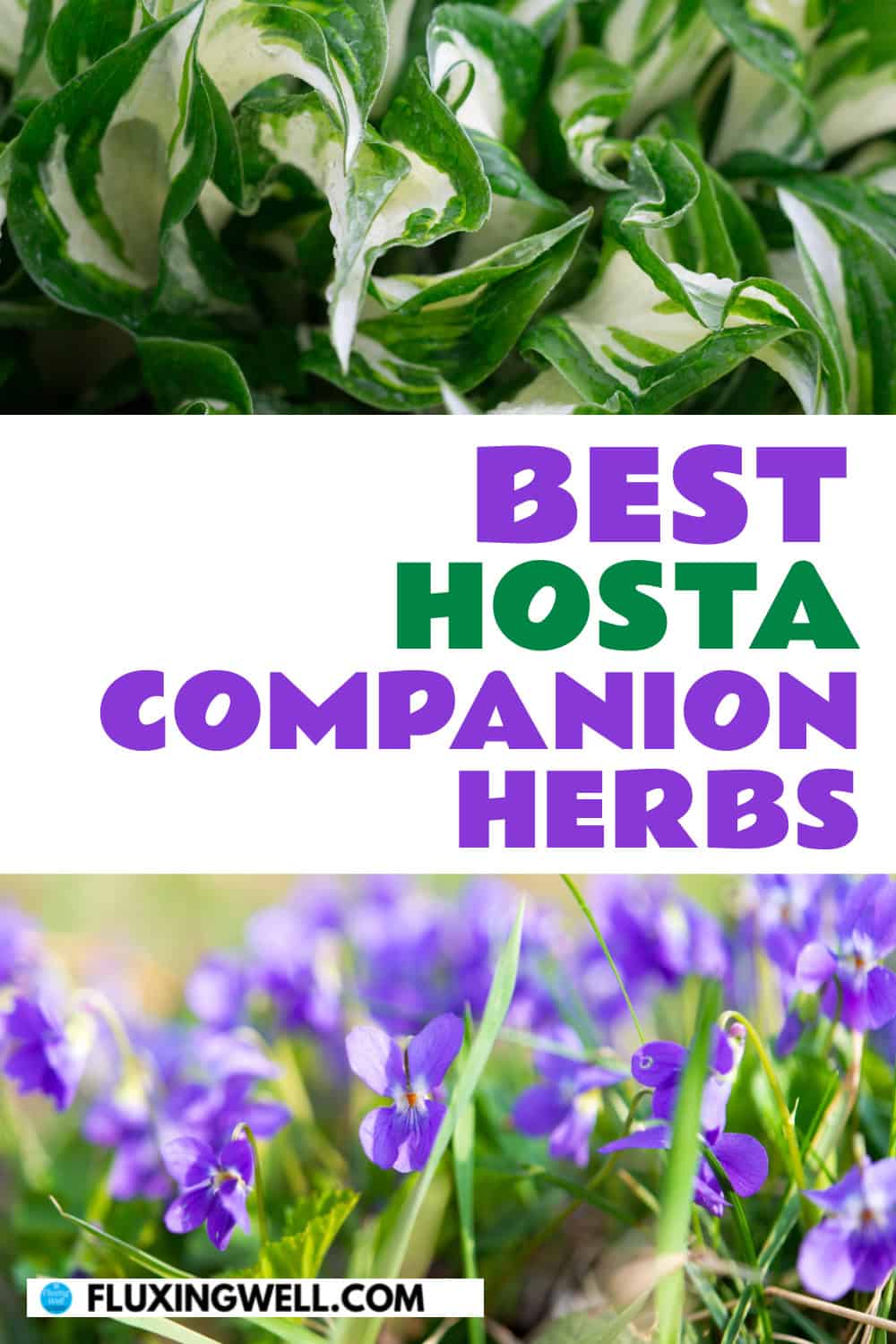
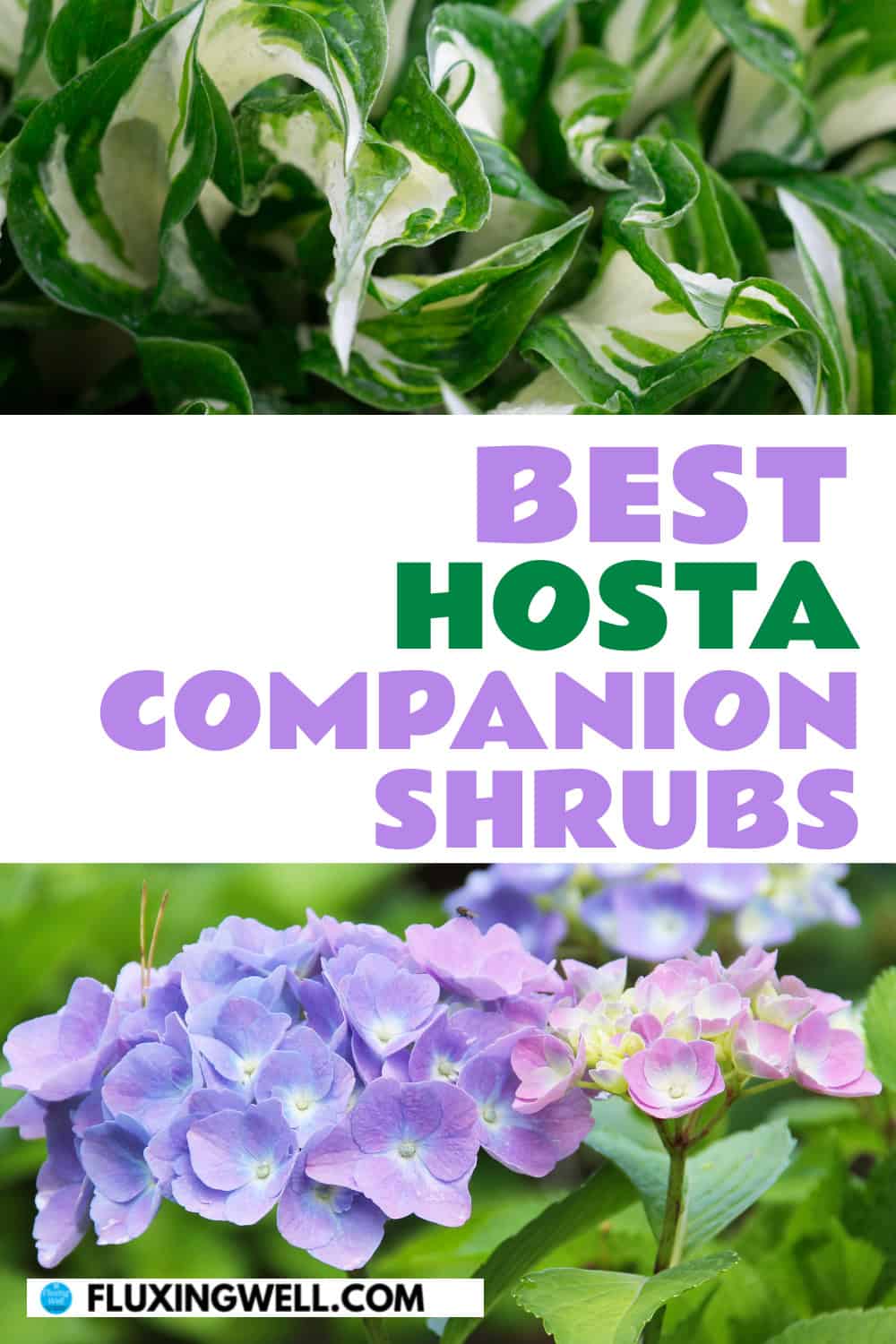
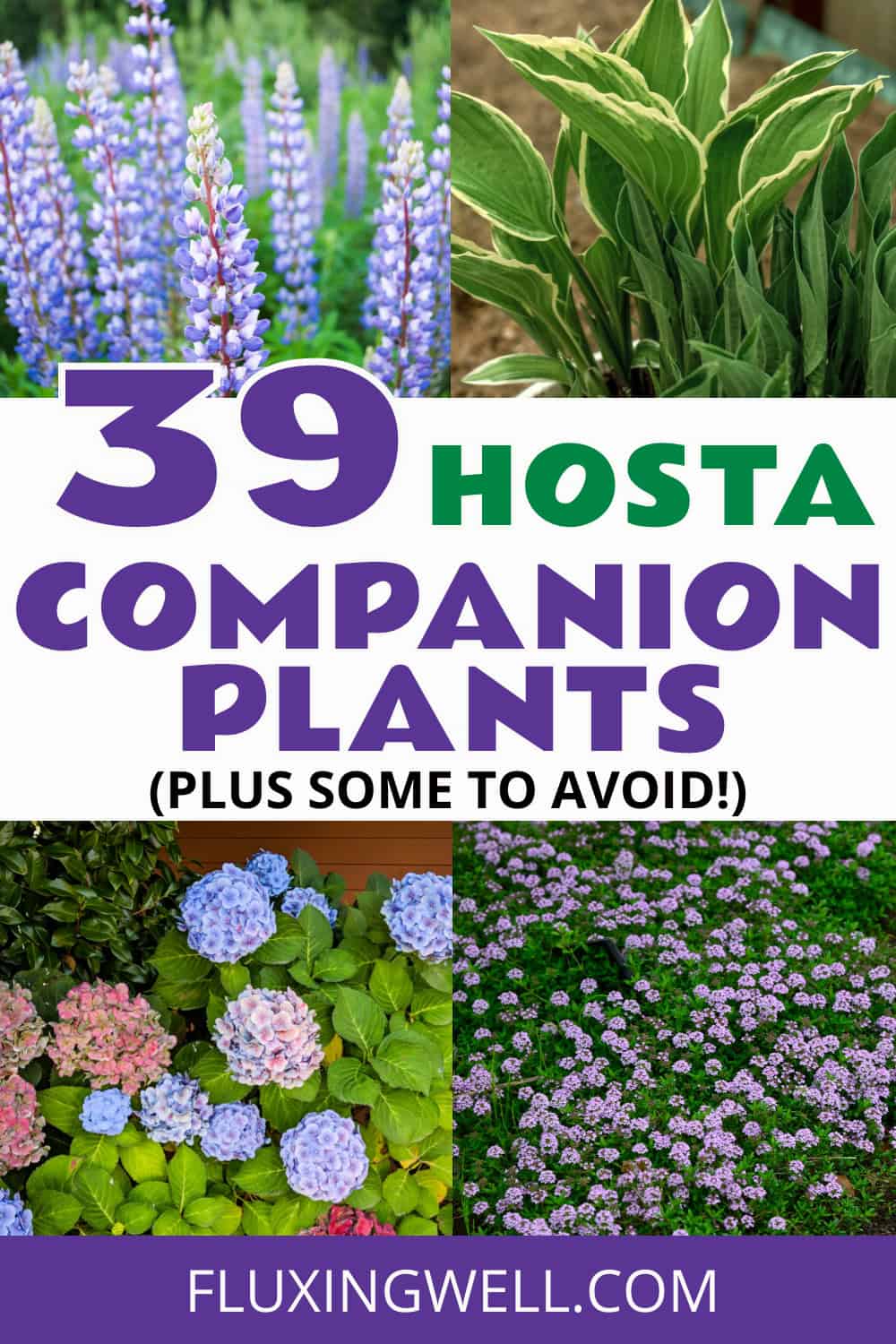
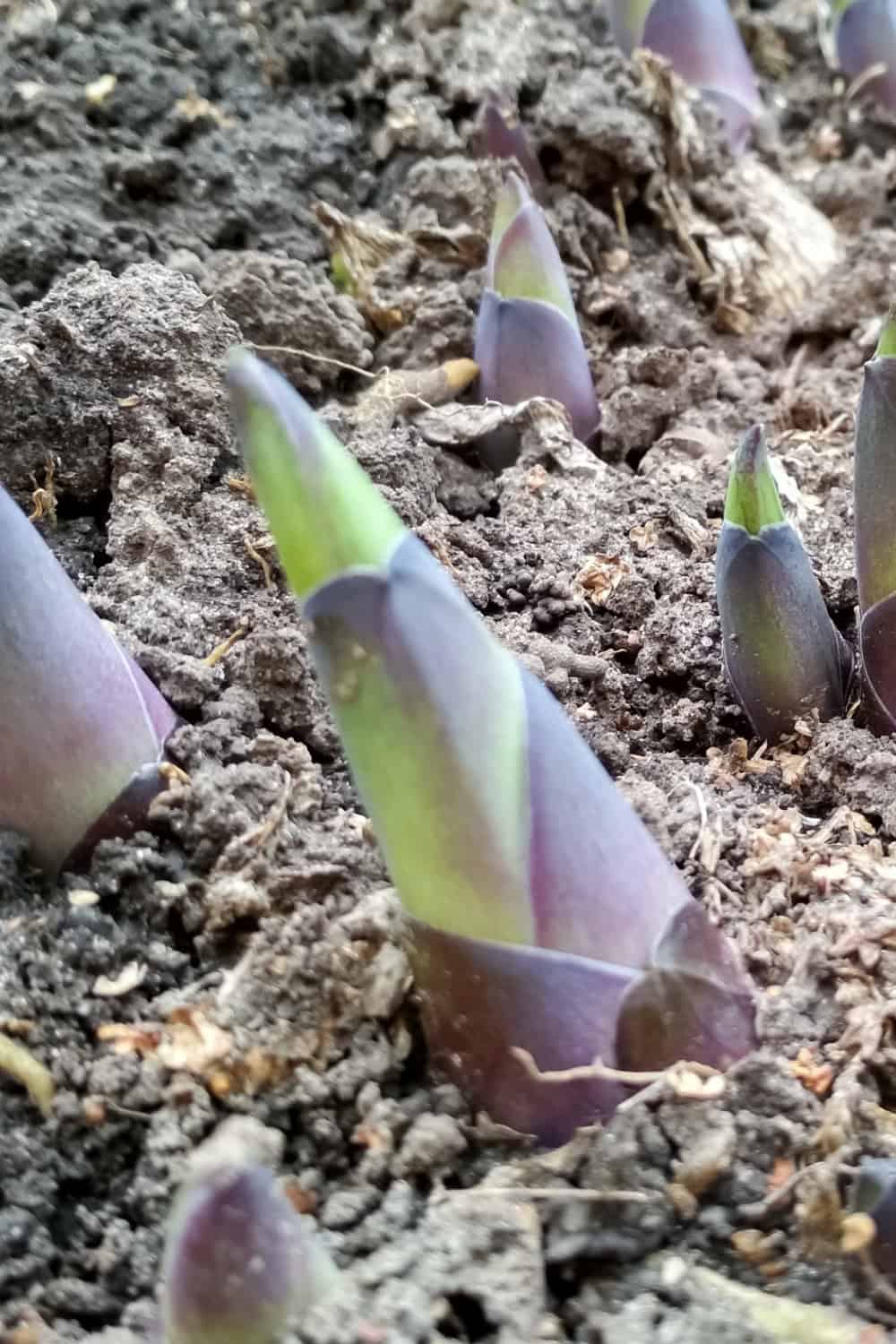
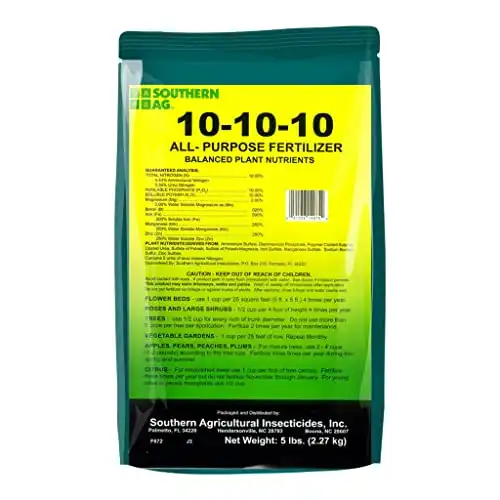
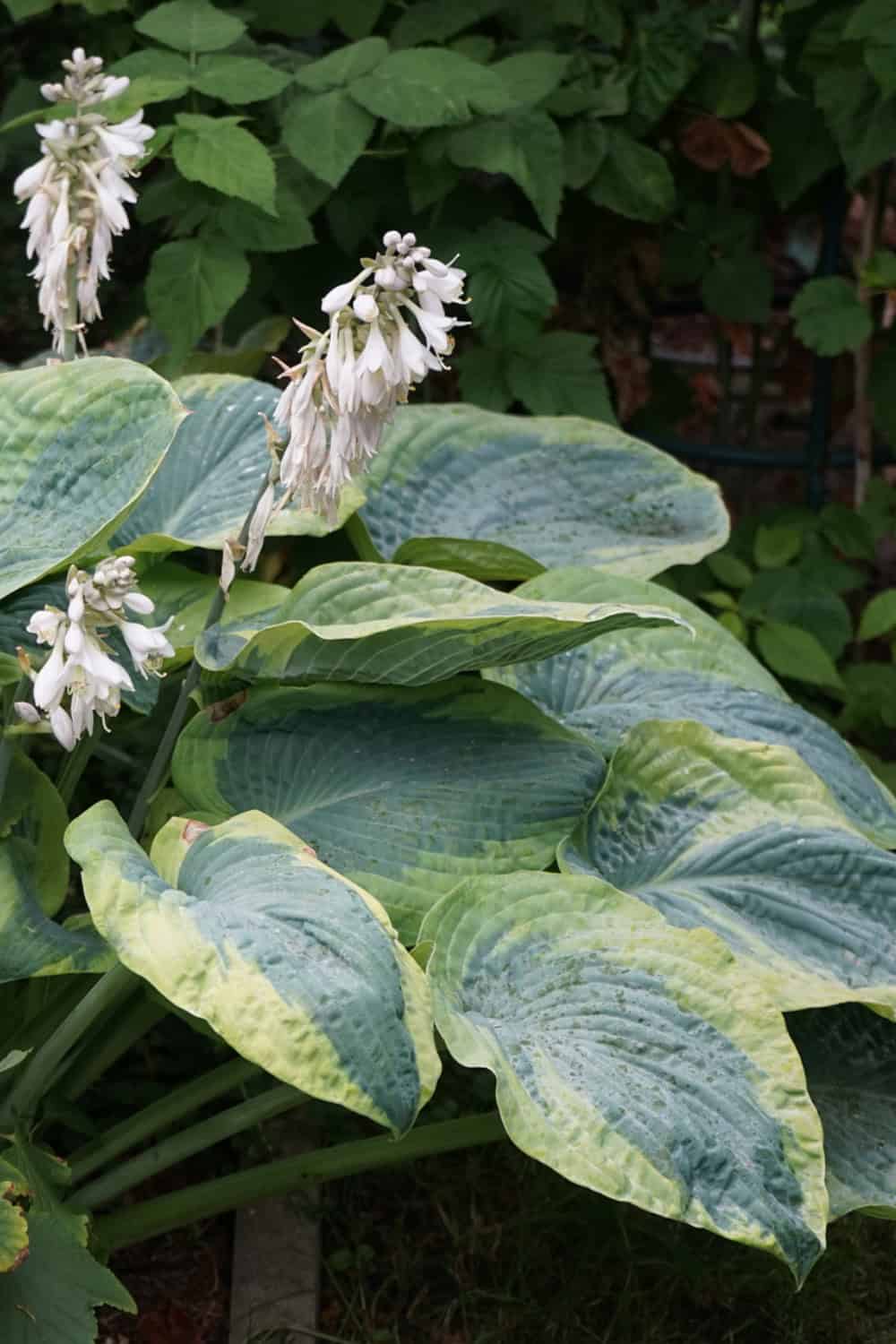
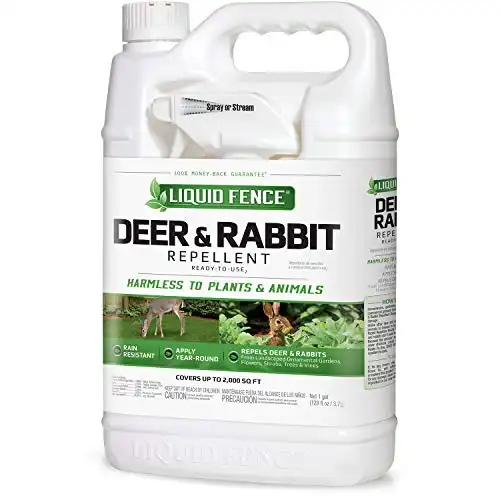

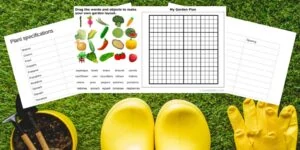
This is a useful list of shrubs, herbs, and perennials to Pair with Hostas . Thanks for putting this list together!
You’re welcome! Hostas add a lot of interesting depth to our shade garde areas.
Thank you for this great list of 40 shade-loving shrubs, herbs, and perennials to pair with hostas for a stunning garden at my home. I’ve been searching for ideas to plant around a certain part of our backyard. We have the perfect spot next to our back patio to plant these.
Great! Hostas are so easy to care for. I know you will love them!
Thanks for the great information on hosta companion plants! I have a lot of hostas in my yard, so this will be a wonderful resource. I appreciate your careful research and experience.
I appreciate your kind words. Hostas are fabulous, aren’t they?
Thank you for the list of best hosta companion plants. I do have a lot of shady areas where I live, so I especially appreciate the shade-loving perennial and shrub ideas. Great inspiration!
I am so glad you found the list of hosta companion plants helpful. Happy shade gardening!